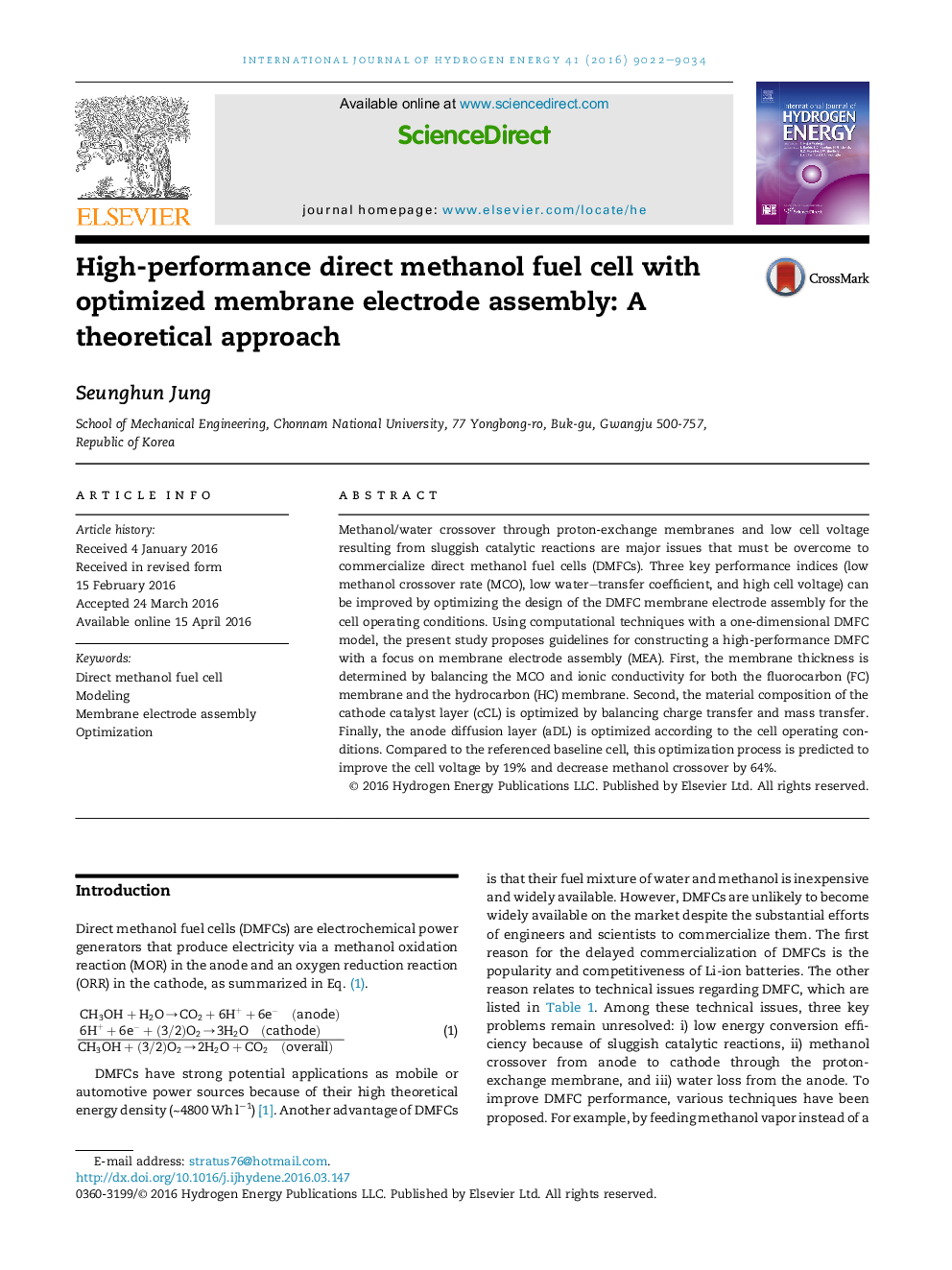| Article ID | Journal | Published Year | Pages | File Type |
|---|---|---|---|---|
| 1269917 | International Journal of Hydrogen Energy | 2016 | 13 Pages |
•Optimization of DMFC is conducted by computational technique with 1-D DMFC model.•Membrane, cathode catalyst layer, anode diffusion layer are optimized in sequence.•DMFC shows gradually improved performance after finishing each step.•It is predicted 19% improvement of cell voltage with 64% reduction of methanol crossover.
Methanol/water crossover through proton-exchange membranes and low cell voltage resulting from sluggish catalytic reactions are major issues that must be overcome to commercialize direct methanol fuel cells (DMFCs). Three key performance indices (low methanol crossover rate (MCO), low water–transfer coefficient, and high cell voltage) can be improved by optimizing the design of the DMFC membrane electrode assembly for the cell operating conditions. Using computational techniques with a one-dimensional DMFC model, the present study proposes guidelines for constructing a high-performance DMFC with a focus on membrane electrode assembly (MEA). First, the membrane thickness is determined by balancing the MCO and ionic conductivity for both the fluorocarbon (FC) membrane and the hydrocarbon (HC) membrane. Second, the material composition of the cathode catalyst layer (cCL) is optimized by balancing charge transfer and mass transfer. Finally, the anode diffusion layer (aDL) is optimized according to the cell operating conditions. Compared to the referenced baseline cell, this optimization process is predicted to improve the cell voltage by 19% and decrease methanol crossover by 64%.
